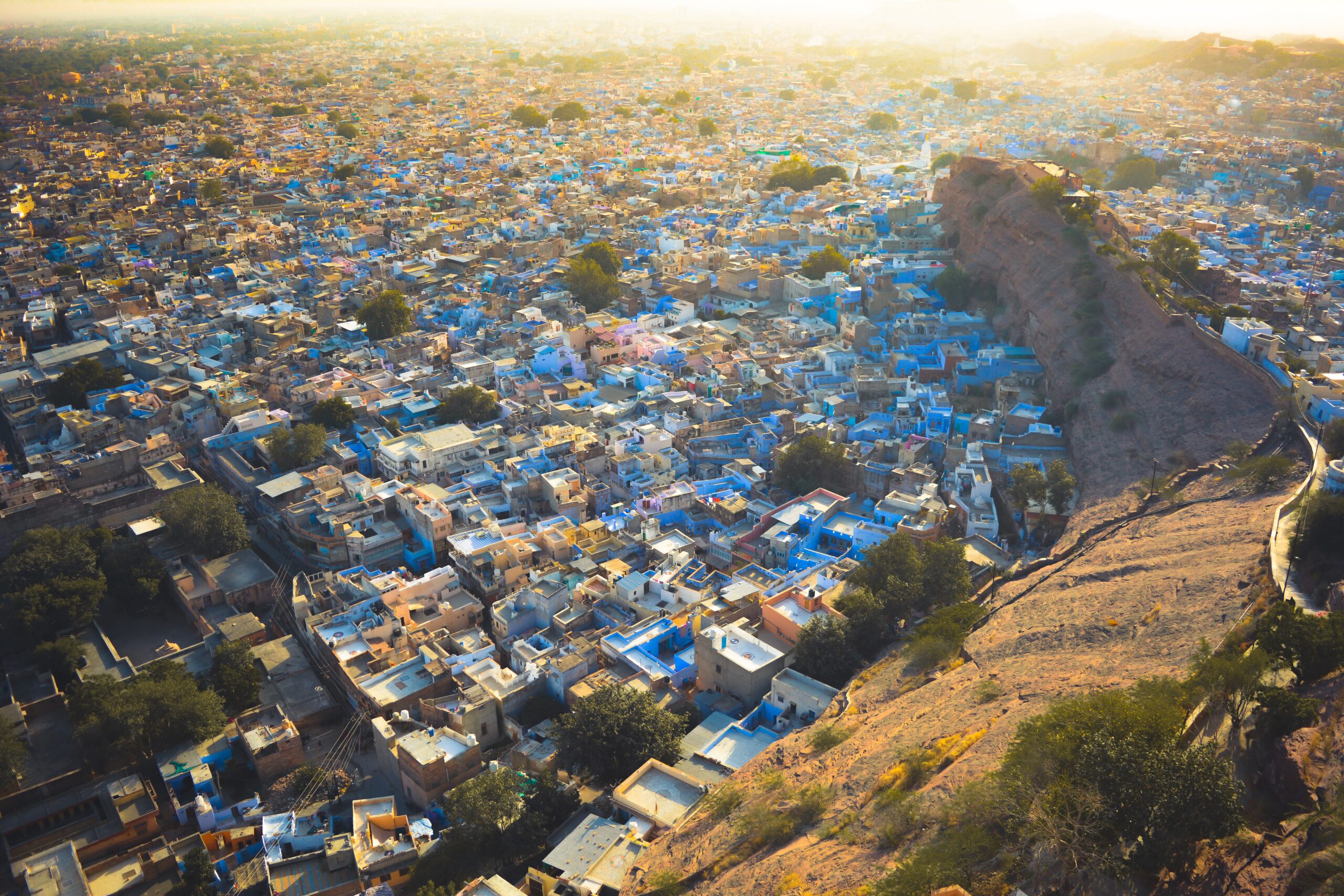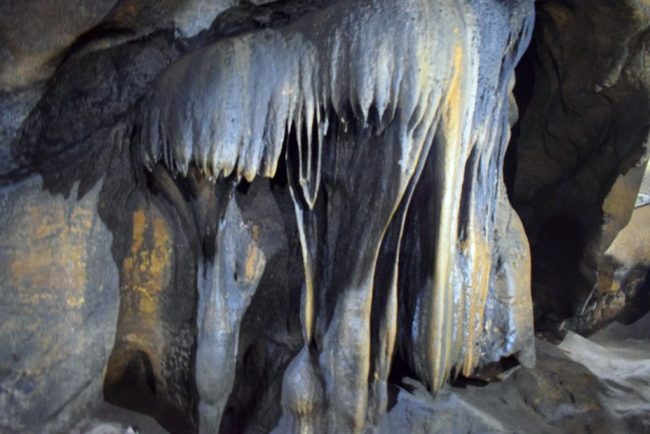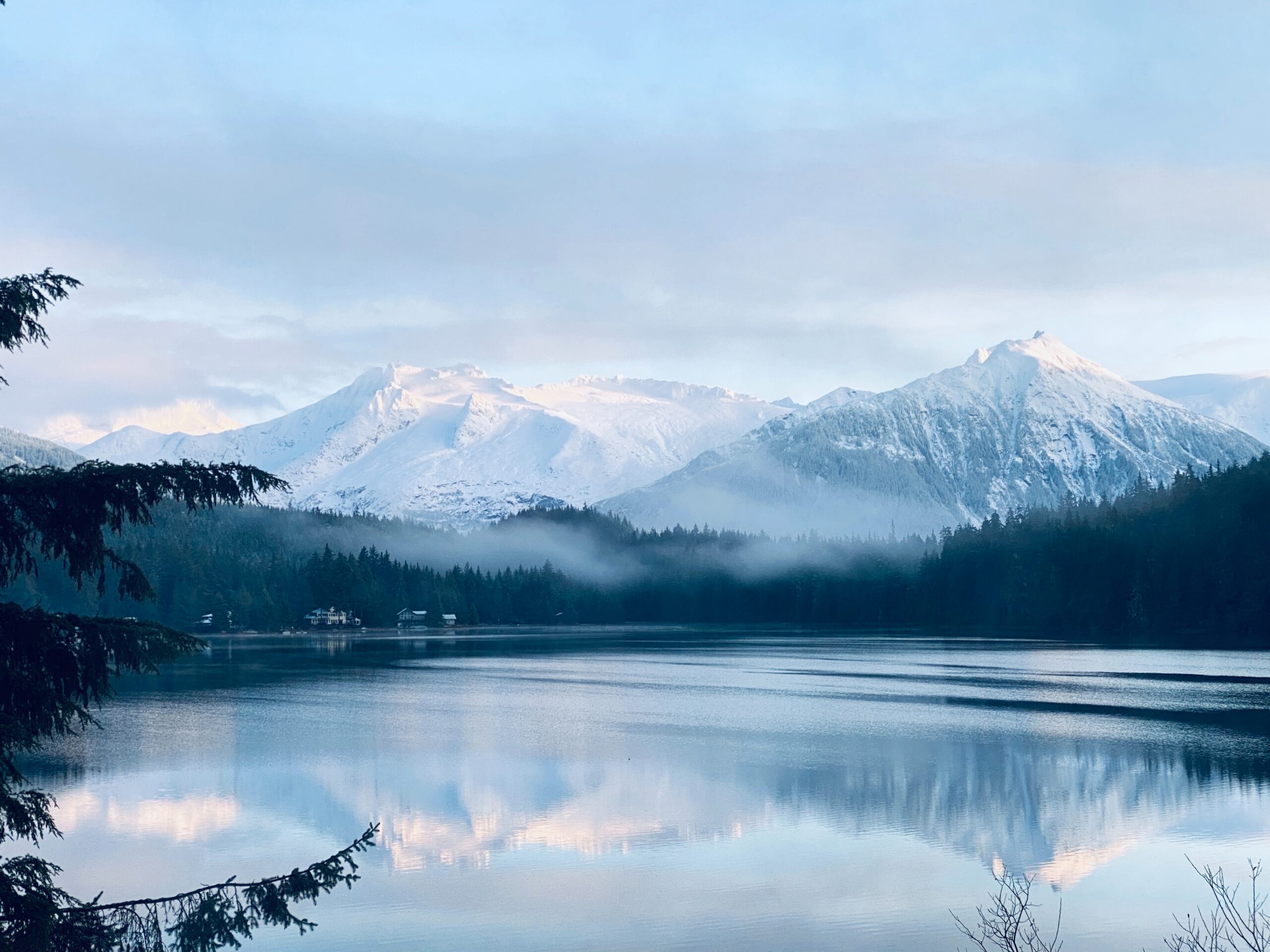Table of Contents
Jodhpur: The Blue City
The Kingdom of Marwar, which is now a part of Rajasthan, had Jodhpur as its capital in the past. With its numerous palaces, forts, and temples scattered around the desolate Thar Desert, Jodhpur is a well-liked tourist destination. In Rajasthan and throughout India, it is commonly referred to as the “Blue City.” The structures in Jodhpur are known for their unusual colour, which is a nod to the Brahmins who painted their homes blue to ward off flies and keep them cool in the heat. The ancient city, which was founded in 1459 AD, is surrounded by a massive wall and is only accessible by eight majestic gates. The lively Sardar Market, where a flurry of busy bazaars is situated beneath the iconic clock tower, is connected to Jodhpur’s contemporary centre by a wide, open boulevard. This gorgeous city’s towering forts provide for a spectacular sight that you wouldn’t want to miss. A steep hill is dominated by Mehrangarh’s massive, dominating fortress, which has eight gates leading out of the citadel. The new city is outside the building. Additionally, Jodhpur is renowned for the unique Marwari or Malani horse breed, which is unusual and only found there.
Culture and Tradition of Jodhpur
The Marwari language is completely embedded in the Jodhpur population’s tongue. Jodhpur residents usually dress in their traditional attire, and the multicoloured outfits they don are quite intriguing. Women dress in gathered “Ghagras” and hip-length Kurtis, while men’s attire is characterised by turbans on their heads. The multicoloured turbans that men wear is yet another distinctive aspect of Jodhpur culture. Marwar Festival and Jodhpur International Desert Kite Festival are the two primary festivals celebrated in Jodhpur. Another reason Jodhpur is well-known is for the great Rajasthani-inspired art and music it produces.
Art and Food of Jodhpur
Mawa Kachori, Pyaaz Kachori, Makhaniya Lassi, Panchkuta, as well as hot and spicy Mirchibada, are all well-known dishes from Jodhpur. Try the sweets from Janta Sweet Home, Pokhar Sweets, and Jodhpur Sweet Home for delectable treats. The Jodhpur bazaars provide a variety of goods, including beautiful Rajasthani textiles, clay figures, miniature camels and elephants, marble inlay work, and traditional silver jewellery, in addition to tie-and-dye fabrics, embroidered leather shoes, lacquerware, antiques, carpets, and puppets.
History of Jodhpur
The city, which served as the seat of the princely state of Jodhpur, was established in 1459 by the Rajput leader Rao Jodha, one of the warlike kings of the old Rajputana area. The princely kingdom, which had been established around 1212, had grown to its greatest strength under the tenure of Rao Maldeo (1532-69), and after the Mughal emperor Akbar’s invasion in 1561, the state had pledged allegiance to the Mughals. The Mughal emperor Aurangzeb invaded and pillaged the Marwar region in 1679 and ordered the locals to convert to Islam. Jodhpur was placed under British paramountcy in 1818. It was the biggest princely state in the Rajputana Agency, the British colony that oversaw the area, and it dominated much of what is now Rajasthan state’s centre and southwest regions. In 1949, it joined Rajasthan.
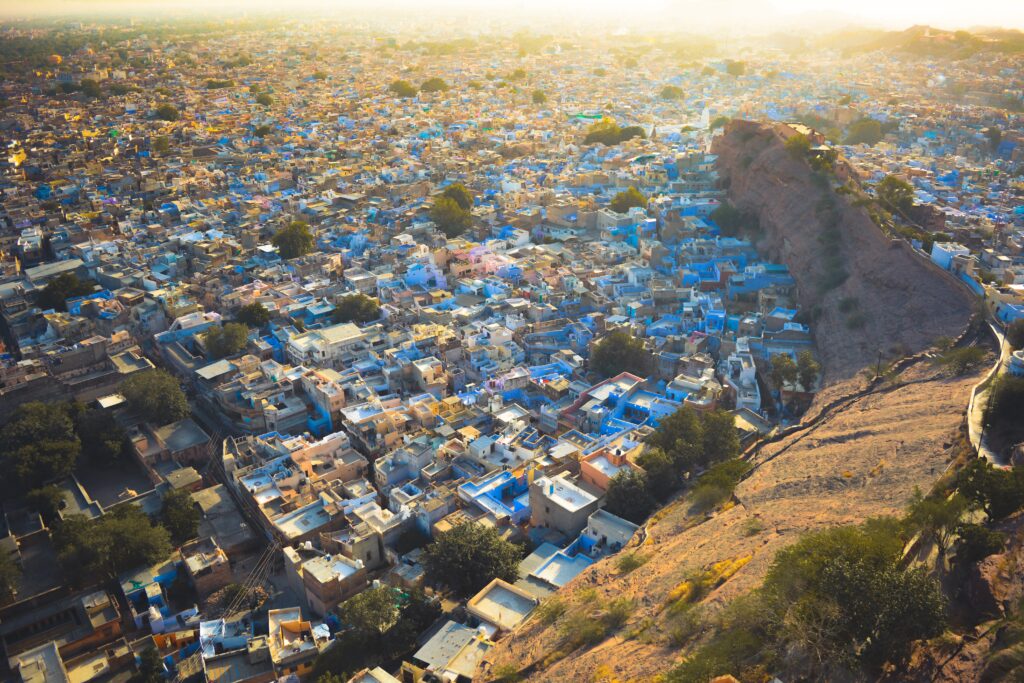
Geography of Jodhpur
The Jodhpur district is situated in Rajasthan’s western region, between latitudes of 26°00′ and 27°37′ north and longitudes of 72°55′ and 73°55′ east. In the Jodhpur Urban Area, the Jojari River runs from Banad to Salawas and is a tributary of the Luni River. It has the title of second biggest district in the state and spans a total area of 22,850 square kilometres in Rajasthan.
Weather Condition
Summer (April – June)
Since it gets quite hot throughout the day, it’s advisable to avoid these. And the temperature fluctuates from 30°C at night and 48°C during the day.
Monsoon (July – September)
Rain falls throughout the two months of July and September. The excessive degree of humidity combined with the location’s temperature results in a clammy and uncomfortable climate.
Winter (November – February)
The greatest time to visit Jodhpur is during these months since the weather is beautiful and you can easily and comfortably tour the monuments. The temperature fluctuates between 11°C and 25°C.
Places to Visit
Mehrangarh fort: The Mehrangarh Fort rises impregnably and perpendicularly from a hill 125 metres above Jodhpur’s skyline. One of the most well-known forts in India, it is rich in stories and history. The second gate of Mehrangarh Fort still displays the scars left by cannonball strikes by the Jaipuri army. Presently, the fort is known for its exquisite Architecture.
Umaid Bhawan: Maharaja Umaid Singh constructed Umaid Bhawan Palace in 1929 in response to a famine that had recently struck the state. Because Chittar hill’s stones were used in its construction, it was also known as the Chittar Palace. The palace took 16 years to build and was designed by renowned British architect HV Lanchester.
Jaswant Thada: In 1899, Maharaja Jaswant Singh II’s memorial Jaswant Thada was constructed. The Mehrangarh Fort is nearby. The serene design of the marble building is beautiful. The carvings are very detailed. The kings of Rathore are shown on the portraits within Jaswant Thada.
Mandore Garden: Before Jodhpur was founded, Mandore, which dates to the sixth century, served as Marwar’s administrative centre. A government museum, a “Hall of Heroes,” and a temple dedicated to 33 Koti (Type) Gods are also located within the Mandore Gardens. The museum has a collection of sculptures and relics that were discovered nearby. Here, the magnificent architecture of a bygone age is vividly seen.
Clock Tower: A well-known sight in the Old City is the clock tower. Maharaja Sardar Singh built it while he was in power between 1880 and 1911. The fort may be seen well from the clock tower. A large variety of goods are offered in Sardar Market, which is next to the clock tower.
Kailana Lake: Pratap Singh built Kailana Lake in 1872 so Jodhpur and the neighbouring districts would have access to water. it’s a well-liked location for sailing, birding, and seeing the most gorgeous sunsets.
Machiya Safari Park: It is a must-see location for nature and animal lovers. Several creatures, including the desert fox, wild cat, deer, monitor lizard, and blue bull, may be seen here in their native environment.
Rao Jodha Desert Rock Park: You may learn more about Rajasthan’s rocky trail plant life by taking a stroll around the Rao Jodha Desert Rock Park. This park, which spans a 170-acre area, was established in 2006 with the goal of re-establishing the biodiversity of the wetlands around the illustrious Mehrangarh Fort.
Chamunda Mata Temple: It is one of the most popular places of worship in the city. In its sanctum sanctorum is a black stone idol of Mother Chamunda, which was brought here from Mandore in 1460 by Rao Jodha.
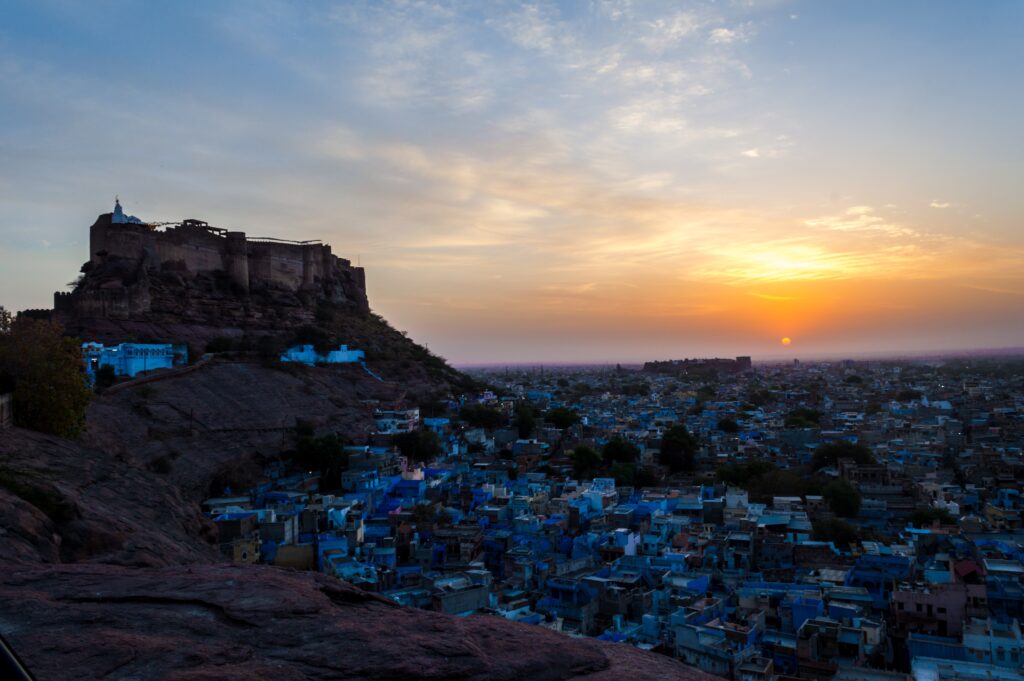
How to Reach
By Air: The domestic airport for Jodhpur is around five kilometres from the city’s centre. Daily flights to Jodhpur are available from Delhi, Mumbai, Jaipur, Udaipur, and other significant Indian cities. To go to any location in the city, cabs and cars are readily accessible outside the airport.
By Road: Road communication with Jodhpur was made simple by direct buses from Delhi and Jaipur. This route offers both multiple privately operated deluxe and luxury buses as well as government-run Volvo coaches.
By Rail: The city of Jodhpur is served by trains from a number of locations, including Delhi, Mumbai, Chennai, Kolkata, Jaipur, and many others. Apart from the normal express and postal trains, Jodhpur city is also served by the opulent Palace on Wheels. Outside the station, there are several local taxis that may be used to get to any location in the city.
Jodhpur Tour Cost
How much does Jodhpur tour cost?
Total Cost INR 9,600/–
Cost for 3 Nights Stay (per person)- Starting Point Delhi
Transport- INR 3,000/- including return
Hotel- INR 3,000/-
Food- INR 2,500/-
Other Things- INR 1,100/-
Thank You for Visiting Our Website “Fact Houses” (facthouses.com)

